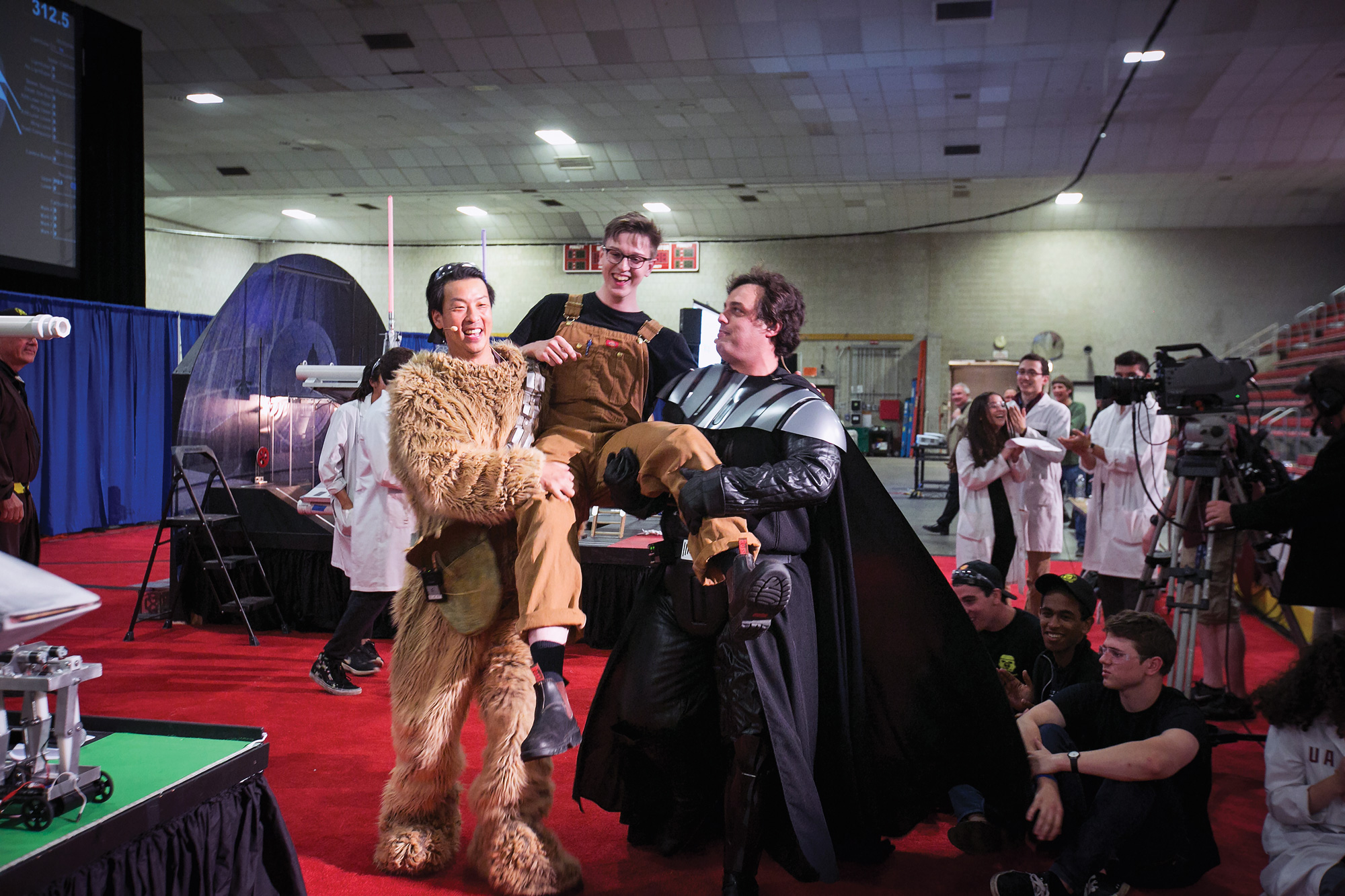The Torque Was With Him
A victor is crowned in MIT’s annual robot competition.

If truth be told, Tom Frejowski ’19 got a little lucky in the Star Wars–themed robot competition that capped off this year’s 2.007 Design and Manufacturing class. Sure, he’d designed a robust, reliable, and completely autonomously controlled robot that consistently racked up 600 points in each round of head-to-head competition. (The 160 student-built bots earned points by completing such tasks as dumping Imperial Stormtroopers into a trench, activating a cantina band, or spinning up cylindrical thrusters on the wings of a replica X-Wing Starfighter.) Frejowski’s robot “even had the programmed capability to try to score, mess up, figure out it had messed up, and try again,” says Amos Winter, who co-teaches 2.007 with fellow mechanical engineering faculty member Sangbae Kim. But Richard Moyer ’19 had dominated the competition all night, topping 900 points in nearly every round. In the finals, however, Moyer’s bot faltered and Frejowski’s prevailed. In keeping with 2.007 tradition, Frejowski was hoisted up by Kim and Winter, better known on that day as Chewbacca and Darth Vader.
Keep Reading
Most Popular
Large language models can do jaw-dropping things. But nobody knows exactly why.
And that's a problem. Figuring it out is one of the biggest scientific puzzles of our time and a crucial step towards controlling more powerful future models.
The problem with plug-in hybrids? Their drivers.
Plug-in hybrids are often sold as a transition to EVs, but new data from Europe shows we’re still underestimating the emissions they produce.
Google DeepMind’s new generative model makes Super Mario–like games from scratch
Genie learns how to control games by watching hours and hours of video. It could help train next-gen robots too.
How scientists traced a mysterious covid case back to six toilets
When wastewater surveillance turns into a hunt for a single infected individual, the ethics get tricky.
Stay connected
Get the latest updates from
MIT Technology Review
Discover special offers, top stories, upcoming events, and more.